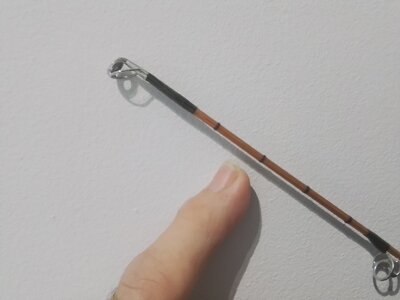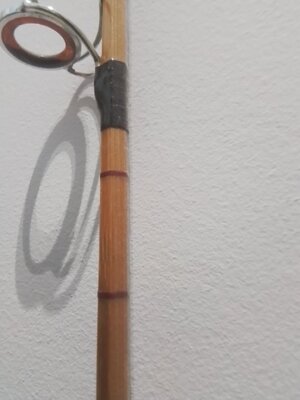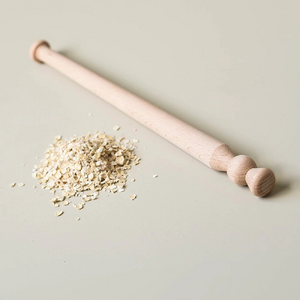Trivia.
Page 2 - Passionate about caravans & motorhome? Join our community to share that passion with a global audience!
You are using an out of date browser. It may not display this or other websites correctly.
You should upgrade or use an alternative browser.
You should upgrade or use an alternative browser.
- Mar 14, 2005
- 19,233
- 4,405
- 50,935
I recognised immediately as a Deltic Engine, but without being able to see the timing of the engine it I wasn't sure if it was classed as a 2 or 4 stroke cycle. How ever wikipedia does have a very nice illustration, that show the opposing pistons in each cylinder are timed exactly the same which makes it a 2 stroke.
If however they had manage to offset the timing such that at any time the two pistons in a cylinder where moving in the same direction, you could describe a form of 4 stroke cycle. It would however make the engine less refined and only produce about half the power of the two stroke though its combustion might be cleaner.
- Nov 30, 2022
- 2,002
- 1,905
- 5,935
Deltic were only ever 2 stroke engines, so if you recognised it you would surely have known that.
A horizontally opposed inwards facing 4 stroke engine woukd require inlet and exhaust valves, none were present in the Deltic engine.
How on earth can you get a cylinder with inwardly opposed pistons to operate if the pistons are ever moving in the same direction? The compression would never happen because as one piston advances on the other, and that one is receding the volume cannot decrease to provide the compression.
A 4 stroke boxer engine uses a central crankshaft with pistons, and cylinders at 180⁰ opposition. Like Subaru (shown below)
Commer used another horizontally inwardly opposed two stroke design A VERY weird, but very powerful engine indeed with an exceedingly distinctive engine note. Google "Commer Knocker" if you are interested.
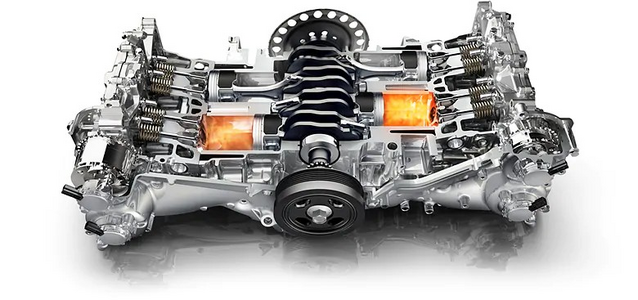
A horizontally opposed inwards facing 4 stroke engine woukd require inlet and exhaust valves, none were present in the Deltic engine.
How on earth can you get a cylinder with inwardly opposed pistons to operate if the pistons are ever moving in the same direction? The compression would never happen because as one piston advances on the other, and that one is receding the volume cannot decrease to provide the compression.
A 4 stroke boxer engine uses a central crankshaft with pistons, and cylinders at 180⁰ opposition. Like Subaru (shown below)
Commer used another horizontally inwardly opposed two stroke design A VERY weird, but very powerful engine indeed with an exceedingly distinctive engine note. Google "Commer Knocker" if you are interested.

Last edited:
- Mar 24, 2014
- 415
- 128
- 18,735
Looks like it would be something to shave something into a cylindrical shape, dowels or, possibly, arrows?OK folks
Can anyone identify what this is? A few clues..
It was used by my father in law who passed away 18 months ago aged 90, basically for his entire working life.
He used it in the manufacture of something used for leisure purposes
Each item was hand made, to a similar pattern.
The particular item(s) he made are now not at all common, but very similar items, made from modern materials are in common use.
The particular items made by him are now collectible by those "in the know" and still function in exactly the same as they did when brand new.
The items don't "wear out" in any accepted manner.
So, get your thinking hats on. I am happy to answer any questions, but will only give yes or no responses!
The Napier Deltic 2-stroke uses a timing differential for the two pistons in each cylinder to enable different timing for the exhaust port compared to the inlet port - this is demonstrated in the Wikipedia simulation where the piston movement isn't symmetrical - at some points both the pistons in a cylinder are moving in the same direction - but only for a short period.
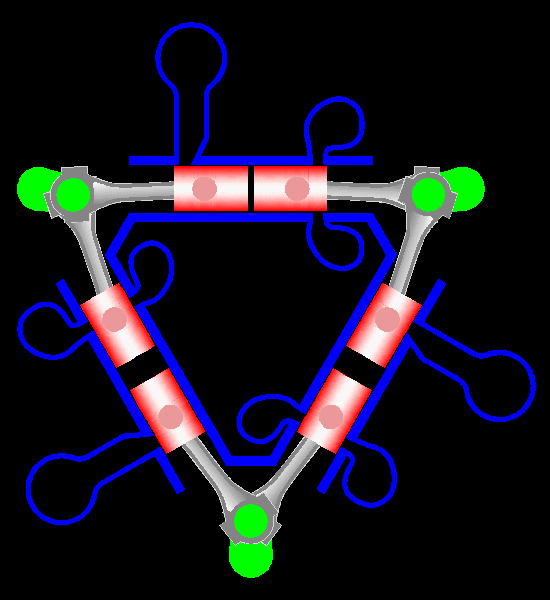
 en.wikipedia.org
en.wikipedia.org

Napier Deltic - Wikipedia
- Mar 24, 2014
- 415
- 128
- 18,735
Looks like it would be something to shave something into a cylindrical shape, dowels or, possibly, arrows?
Is it a rounding plane?No question asked, so no answer possible
- Feb 13, 2024
- 1,440
- 907
- 1,435
- Nov 30, 2022
- 2,002
- 1,905
- 5,935
No, (but close)Is it a rounding plane?
No.Is it something to do with roof thatching?
- Jun 16, 2020
- 5,826
- 2,749
- 17,935
Dowel making tool.OK folks
Can anyone identify what this is? A few clues..
It was used by my father in law who passed away 18 months ago aged 90, basically for his entire working life.
He used it in the manufacture of something used for leisure purposes
Each item was hand made, to a similar pattern.
The particular item(s) he made are now not at all common, but very similar items, made from modern materials are in common use.
The particular items made by him are now collectible by those "in the know" and still function in exactly the same as they did when brand new.
The items don't "wear out" in any accepted manner.
So, get your thinking hats on. I am happy to answer any questions, but will only give yes or no responses!
John
- Nov 30, 2022
- 2,002
- 1,905
- 5,935
The timing of a two stroke engine is created by the position of the inlet and exhaust ports in the cylinder barrel, not a differential in the piston movements. The pistons must both be at their respective "top dead centres" at the same instant to produce the highest possible compression. If they didn't meet at that point one piston would, at some point, be "chasing" the other so maximum compression wouldn't be achieved.The Napier Deltic 2-stroke uses a timing differential for the two pistons in each cylinder to enable different timing for the exhaust port compared to the inlet port - this is demonstrated in the Wikipedia simulation where the piston movement isn't symmetrical - at some points both the pistons in a cylinder are moving in the same direction - but only for a short period.

Napier Deltic - Wikipedia
en.wikipedia.org
It's a 2 stroke so evert time the piston goes down the barrel is a power stroke.
- Nov 30, 2022
- 2,002
- 1,905
- 5,935
- Nov 11, 2009
- 25,563
- 9,361
- 50,935
- Nov 30, 2022
- 2,002
- 1,905
- 5,935
Is it fir making wooden thole pins used in traditional boat building. ?
No to both.Is it for working with withy, something like stripping or pointing the wood. Or chair making
A fair few are close(ish) so heres another few clues to hopefully help.
Wood is not involved.
It is an implement used in the manufacture of something used for a "leisure pursuit" that is connected with water
The overal pursuit, which the manufactured item is used in, is a very common and popular one, predominantly, but not exclusively enjoyed by men of all ages,
It involves some, but not a lot, of physical movement.
The number of people who can make the item this tool is used in the manufacture of is now very small indeed, probably less than 10 in UK. Hence whatever they are, are now being sought after and collectible.
Modern versions, made of different materials, are readily,available
Get those thinking caps on.
Last edited:
- Nov 11, 2009
- 25,563
- 9,361
- 50,935
Traditional fishing rodsNo to both
A fair few are close(ish) so heres another few clues to hopefully help.
It is an implement used in the manufacture of something used for a "leisure pursuit" that is connected with water
The overal pursuit, which the manufactured item is used in, is a very common and popular one, predominantly, but not exclusively enjoyed by men of all ages,
It involves some, but not a lot, of physical movement.
The number of people who can make the item this tool is used in the manufacture of is now very small indeed, probably less than 10 in UK. Hence whatever they are, are now being sought after and collectible.
Modern versions, made of different materials, are readily,available
Get those thinking caps on.
On the Napier Deltic, one piston in a cylinder "operates" the inlet port and the other piston "operates" the exhaust port - the timing differential for TDC only has a slight effect on maximum compression but significantly improves the exhaust scavenging, a worthwhile sacrifice.The timing of a two stroke engine is created by the position of the inlet and exhaust ports in the cylinder barrel, not a differential in the piston movements. The pistons must both be at their respective "top dead centres" at the same instant to produce the highest possible compression. If they didn't meet at that point one piston would, at some point, be "chasing" the other so maximum compression wouldn't be achieved.
It's a 2 stroke so evert time the piston goes down the barrel is a power stroke.
It's definitely a 2-stroke
- Feb 13, 2024
- 1,440
- 907
- 1,435
- Nov 30, 2022
- 2,002
- 1,905
- 5,935
Traditional fishing rods
More accurate than you probably think, so well done you win.
My father in law was the maker of split cane fishing rods where 5 thin tapered slivers "split" from bamboo (bamboo imported from China with around a 4" diameter) are glued together to make a fishing rod. His speciality was trout fly rods and salmon spinning rods.
The pictured device was what he used to smooth the edges where the peices joined and to provide a uniform taper. It was held in one hand whilst the rod "blank" was rotated, and pulled through it by the other. The amount shaved off depended on how tightly he squeezed the two handles. The rods he made were/are truly works of art and an example of extraordinary skill. I did ask him once how many rods that device had been used on, he reckoned tgat over the nearly 75 years he had used it, he reckoned it must have been many thousands!
His name was Tony Croft, and he was, for many decades, highly respected in his field, And his rods are highly collectible He was such a really lovely man. He had a wonderful life making (and repairing) fly rods but I do miss him a lot.
Here are a couple of pictures of a rod he gave me. It is never going near any water, its an artwork!,
This is a picture of the tip, bearing in mind it is 5 continuous pieces of bamboo for each of the 2 sections of the rod all fitted together and glued into a single solid rod!
Its my little finger in the shot to give you an idea of the size, and the skill involved.
Attachments
Last edited:
- Nov 11, 2009
- 25,563
- 9,361
- 50,935
It’s made my day, and thank you for the explanation 👍More accurate than you probably think, so well done you win.
My father in law was the maker of split cane fly fishing rods where 5 thin tapered slivers "split" from bamboo (bamboo imported from China with around a 4" diameter) are glued together to make a fishing rod.
The pictured device was what he used to smooth the edges where the peices joined and to provide a uniform taper. It was held in one hand whilst the rod "blank" was rotated, and pulled through it by the other. The amount shaved off depended on how tightly he squeezed the two handles. The rods he made were/are truly works of art and an example of extraordinary skill. I did ask him once how many rods that device had been used on, he reckoned tgat over the nearly 75 years he had used it, it must have been many thousands.
His name was Tony Croft, and he was, for many decades, highly respected in his field, and a really lovely man. He had a wonderful life making (and repairing) fly rods but I do miss him a lot.
Here are a couple of pictures of a rod he gave me. It is never going near any water, its an artwork!,
This is a picture of the tip, bearing in mind it is 5 continuous pieces of bamboo for each of the 2 sections of the rod all fitted together and glued into a single solid rod!
Its my little finger in the shot to give you an idea of the size, and the skill involved.
- Mar 24, 2014
- 415
- 128
- 18,735
That looks like a spurtle, used for making porridge.
- Nov 16, 2015
- 12,531
- 4,680
- 40,935
Your Cheating. Maybe, but 10 points if you send a photo, ( of one ) in your kitchen drawer.That looks like a spurtle, used for making porridge.

Practical Caravan is part of Future plc, an international media group and leading digital publisher. Visit our corporate site.
© Future Publishing Limited Quay House, The Ambury, Bath BA1 1UA. All rights reserved. England and Wales company registration number 2008885.

